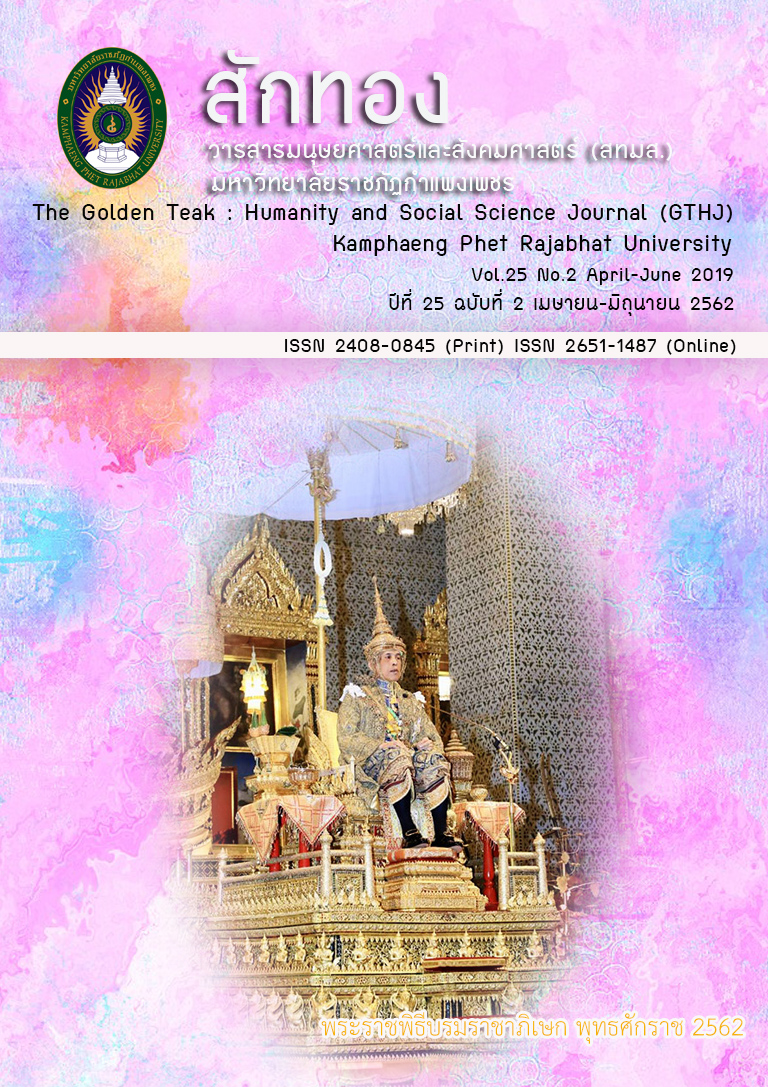Developing and Applying Measurement Techniques of Calcium in Mineral Water for Education Student Learning
Main Article Content
Abstract
Calcium measurement technique in mineral water using a paper-based microfluidic device was developed. Calcium concentration was determined based on the red complex formation between calcium and glyoxal-bis-(2-hydroxyanil) solution. Accuracy of the results from paper-based microfluidic device was evaluated by compared with those obtained by colorimetry and flame photometry. The technique developed was used as science experiment in undergraduate education student class. Experimental learning efficiency was evaluated from student learning efficiency, experimental report, and integrated science skill record and student satisfaction. The results indicated that the calcium detection limit of the developed paper-based microfluidic device was 12.5 ppm. Student learning achievement after learning was significant higher than that assessed before learning (p=0.01). The integrated science skill of the students was good (3.86). Average student satisfaction toward experiment was good (4.47). The technique developed using paper-based microfluidic device was then used in science class and benefits to a large class as it was a simple, quick and environmental friendly method.
Article Details
บทความที่ได้รับการตีพิมพ์เป็นลิขสิทธิ์ของวารสาร สักทอง : วารสารมนุษยศาสตร์และสังคมศาสตร์ สถาบันวิจัยและพัฒนา มหาวิทยาลับราชภัฏกำแพงเพชร
ข้อคิดเห็นใดๆ ที่ปรากฎในวารสารเป็นวรรณกรรมของผู้เขียนโดยเฉพาะ ซึ่งมหาวิทยาลัยราชภัฏกำแพงเพชรและบรรณาธิการไม่จำเป็นต้องเห็นด้วย
References
The Scientific World Journal, (1), 1-10.
Cai, L., et al. (2013). A Simple Paper-Based Microfluidic Device for the Determination of the
Total Amino Acid Content in a Tea Leaf Extract. Journal of Chemical Education,
90(2), 232-234.
Cate, D.M., et al. (2015). Recent Developments in Paper-Based Microfluidic Devices. Analytical
Chemistry, 87(1), 19-41.
Lyra, F.H., et al. (2010). Determination of Na, K, Ca and Mg in biodiesel samples by flame
atomic absorption spectrometry (F AAS) using microemulsion as sample preparation.
Microchemical Journal, 96(1), 180-185.
Pereira, J.B. & Dantas, K.G.F. (2016). Evaluation of inorganic elements in cat’s claw teas using
ICP OES and GF AAS. Food Chemistry, 196, 331-337.
Perjési, P., Almási, A., & Rozmer, Z. (2014). Pharmaceutical Chemistry I – Laboratory.
Experiments and Commentary : Department of Pharmaceutical Chemistry, University
of Pécs Medical School.
Pickett, E.E. (2005). ATOMIC EMISSION SPECTROMETRY | Flame Photometry* A2 - Worsfold,
Paul. In A. Townshend & C. Poole (Eds.), Encyclopedia of Analytical Science (Second Edition) (pp. 203-210). Oxford : Elsevier.
Uždavinienė, D., & Tautkus, S. (2007). Determination of calcium in mineral waters by flame
atomic absorption spectrometry. CHEMIJA, 18(4), 34-37.
Wang, B., Lin, Z., & Wang, M. (2015). Fabrication of a Paper-Based Microfluidic Device To
Readily Determine Nitrite Ion Concentration by Simple Colorimetric Assay.
Journal of Chemical Education, 92(4), 733-736.


